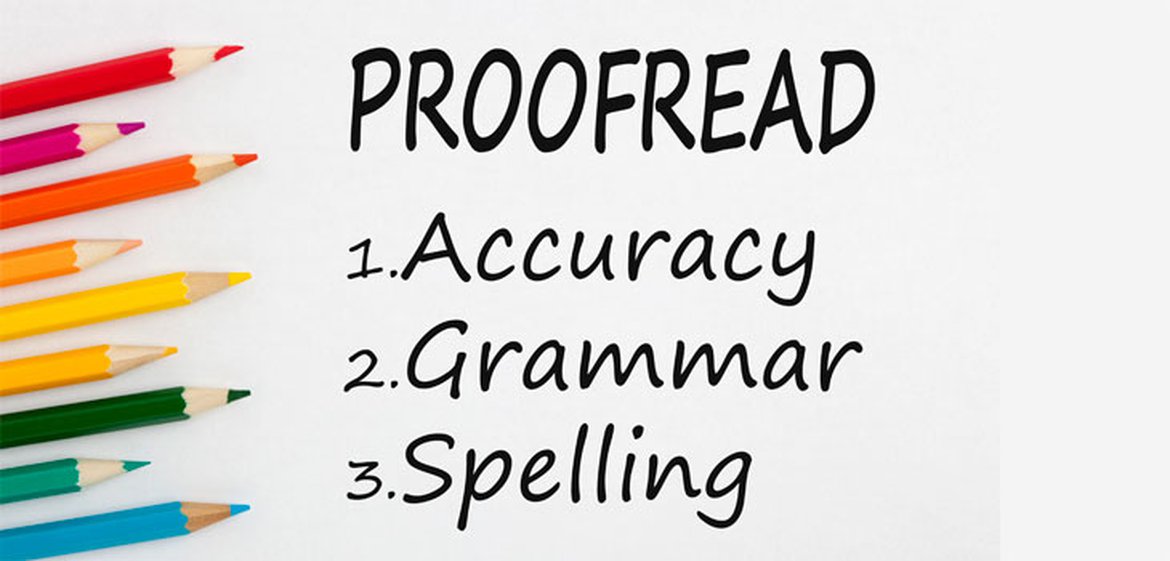The Pudding's in the Proof
June 15, 2018

I’m going to let you in on a dirty little secret: I sometimes make mistakes.
Just the other day I printed 100 posters to promote Running Free, a community running program that I help coordinate. 100 posters emblazoned with May 15, 2017 as the start date. Sure, 2017 was a great year, but for purposes of the 2018 program, it was clearly wrong.
Worse, in the late 90s, when I was living in Melbourne and working at Australia’s National Ballet School, I created an event invitation with the wrong RSVP telephone number.
(Yikes, I can almost hear you thinking, no way are we going to hire this multiple-mistake-making woman for our communications!)
Well, the point is, we all make mistakes. And while mistakes can almost always be fixed, fixing them almost always costs something – money for sure, but also time, reputations, jobs even.
The last thing I want is for you to lose your job, so why not do everything you can to avoid making mistakes in the first place?
In a spirit of generosity – you get to learn from my errors, yay! – I offer five tips and techniques to help you proofread like a pro. The five aren’t mutually exclusive: try them out, mix and match them, see what works best for you. But whatever you do, don’t neglect the proofreading step; it’s crucial to ensure your communications are as professional as possible.
Tip # 1: Use your computer’s tools.
These include spell check, of course, but also the “Search” function to find mistakes you know you commonly make. For example, search for “it”, if you typically confuse “its” and “it’s” or “tion” if you tend to make nouns out of your verbs (investigation instead of investigate, evaluation instead of evaluate – that sort of thing). Just remember that spell check won’t catch mistakes with homonyms, like “they’re,” “their,” and “there” or certain typos like “he” for “the.”
Tip #2: Print out your document.
I know, I care about the trees too, but believe me, most people simply cannot do a proper review on a screen.
Whether it has to do with eyestrain caused by the screen’s light-emitting quality, all the other on-screen distractions constantly vying for our attention, or the way social media has conditioned us to accept and gloss over mistakes and abbreviations, the fact is, it’s much harder to detect typos, grammatical errors, and inaccuracies when we’re reading on a screen.
And this doesn’t just go for the over-50 set. Research has shown that even millennials, who have grown up with screens, proofread better when reading a hard copy.
Tip #3: Read your copy backwards.
This can be time-consuming and feels a bit awkward, but you’d be surprised at how much you catch when you check the text in reverse, word by word. The human brain tends not to read every letter itself but rather the word as a whole; as long as the first and last letters of the word are correct, the brain will get the word. Reading backwards, then, disrupts the brain’s usual habit of “auto-correcting” wrong words inside sentences. Remember, though, this is only good for typos; it won’t help with grammar, syntax or overall flow.
Tip #4: Read it out loud.
When you read a piece aloud, you do catch more than typos. You also get an idea of flow and sense. Reading out loud forces you to slow down and to ensure you understand as you go. If you find yourself stumbling, running out of breath, or substituting words that aren’t on the page, these are signs that you have some issues that go beyond mere typos.
Tip #5: Get someone else to read it.
By the time you’ve thought about your piece, created an outline, drafted it, revised it, maybe had input from others on your team, proofread even, you are usually way too close to the copy to notice even the most obvious errors – if you have the fortitude to tackle it again, that is.
What you need at this stage is a fresh set of eyes. A first-time reader is much more likely to quickly and efficiently pinpoint all those sneaky little errors that escaped your attention. A second person will also be in a better position to evaluate whether or not your sentences make sense.
* * *
In the case of my two mistakes (the only two I’ve made in my life…haha), we were able to re-do the running poster quick-smart and still meet our deadline.
As for the incorrect ballet school phone number, I honestly can’t remember how we resolved that one, but I do know that people somehow managed to RSVP, and that they came to the event, and that it was a great success. And, despite my blunder, the ballet school didn’t fire me.
May you never make such mistakes, but if you do, may they all be so easily fixed.
Effective Communication